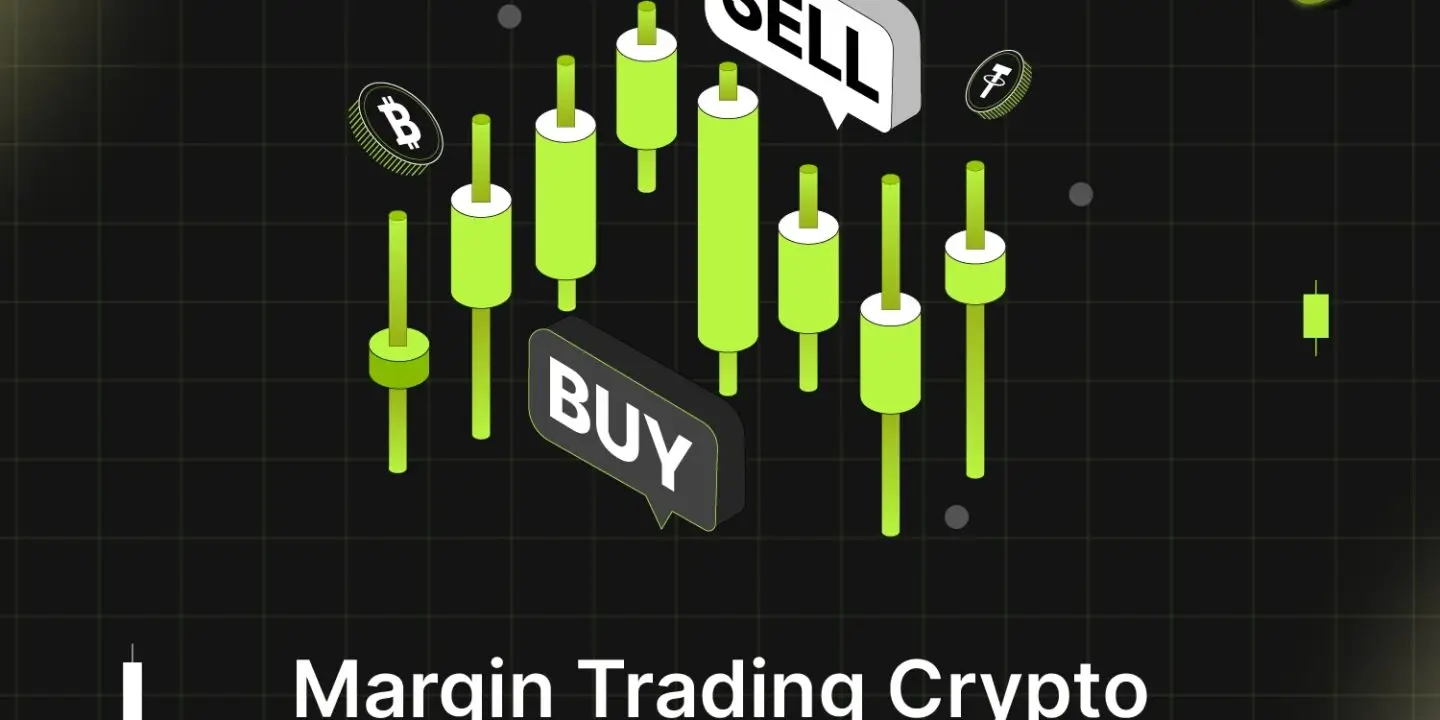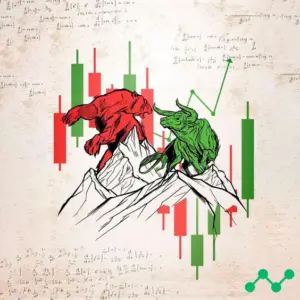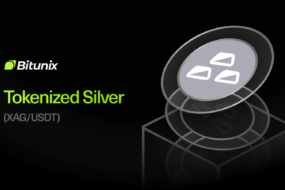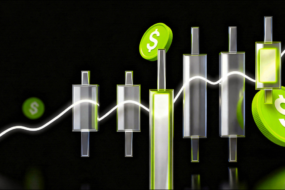
In this article, we examine the idea of margin trading cryptocurrency, focusing on Bitcoin and other digital assets. We will also cover how you can apply leverage trading in a way that aligns with your trading goals.
Margin trading allows traders to manage a large amount of crypto assets with only a small initial deposit that serves as collateral. By borrowing funds from a broker or exchange such as Bitunix, traders gain enhanced market exposure. The main benefit of margin trading crypto is the potential for larger profits, though this comes with significant risks.
Unlike spot trading, where you can only trade with your own capital, margin trading involves borrowing funds to increase your trading position. This can produce higher returns, but also exposes you to amplified losses.

What is Margin Trading in Cryptocurrency?
Margin trading involves borrowing funds from an exchange to increase the size of your trades.
- Deposit collateral (margin): The initial funds you put down.
- Borrow funds (leverage): The exchange provides additional capital relative to your margin.
- Trade larger positions: This magnifies both gains and losses.
Margin trading essentially allows traders to control positions far larger than their account balance. This can make small market moves highly profitable, but also highly risky.
How Does Margin Trading Work in Bitcoin?
- Choose the leverage ratio. For example, 10x leverage means controlling $10,000 with $1,000.
- Open a position. Go long if you expect Bitcoin to rise, or short if you expect it to fall.
- Margin call risk. If your balance drops below the maintenance margin, the exchange will issue a margin call.
- Liquidation. If the account is not replenished, the exchange closes your position automatically.
This mechanism enables traders to magnify outcomes with small deposits. However, the liquidation risk increases with higher leverage, making risk management critical.
What is Leverage in Bitcoin Trading?
- 10x leverage: $100 margin = $1,000 position.
- 20x leverage: $100 margin = $2,000 position.
- 100x leverage: $100 margin = $10,000 position.
Leverage is the ratio of borrowed funds to your own capital. It allows small deposits to control much larger trades. However, the higher the leverage, the closer your liquidation level becomes. For instance, a 1% price drop at 100x leverage can wipe out your entire margin.

Key Terms in Margin Trading
- Margin: Your collateral for borrowed funds.
- Margin Call: An exchange request for more funds if your balance drops too low.
- Liquidation: Forced closure of your trade when margin requirements are not met.
These terms define the mechanics of risk in leveraged trading. Margin is the capital you risk, margin calls are early warnings of losses, and liquidation is the last step when your position is closed automatically by the exchange.
Benefits of Margin Trading Crypto
- Increased earnings potential. Handle larger positions with limited capital.
- Portfolio diversification. Spread investments across multiple cryptocurrencies.
- Market exposure. Gain from both rising and falling prices by going long or short.
The key advantage of margin trading is the ability to expand your potential gains and broaden strategies. By using leverage, traders can diversify their exposure and trade in both bullish and bearish markets.
Risks of Margin Trading Cryptocurrency
- Amplified losses. You can lose more than your initial margin deposit.
- Margin calls and liquidation. Failure to meet margin calls leads to forced closure.
- Volatility risk. Sudden swings in Bitcoin can rapidly impact your trade.
- Borrowing costs. Interest fees on borrowed funds reduce profits over time.
These risks highlight why margin trading is often recommended only for experienced traders. Crypto markets are highly volatile, and leverage amplifies both profits and losses. Without careful management, the risks can outweigh the rewards.
How to Margin Trade Bitcoin: Step-by-Step Guide
- Choose a Margin Trading Exchange
Select a reliable margin trading crypto exchange. Bitunix, for example, offers up to 125x leverage with deep liquidity. Compare fees, leverage ratios, and risk management tools across platforms.
- Open and Verify an Account
Register, complete KYC, and enable 2FA security features to protect your account.
- Deposit Funds
Fund your account with crypto or fiat. This deposit becomes your margin.
- Understand Margin Requirements
Exchanges set both initial and maintenance margin requirements. The initial margin opens the position, while the maintenance margin keeps it open.
- Select Your Leverage
For a $100 balance:
- 10x leverage = $1,000 position.
- 20x leverage = $2,000 position.
- 100x leverage = $10,000 position.
- Place an Order
- Market order: Executes immediately.
- Limit order: Executes at a set price.
- Stop-loss order: Exits automatically at a loss threshold.
- Take-profit order: Secures gains at a target price.
- Monitor and Adjust
Watch your position. Add funds if needed to avoid liquidation.
- Close the Position
Exit with a market or limit order. Check fees, as they affect final results.
Margin trading follows this cycle every time you enter and exit positions, making discipline essential.
Example: How Leverage Affects Bitcoin Margin Trading
| Leverage | Margin ($100) | Position Size | BTC Move +5% | BTC Move -5% |
| 10x | $100 | $1,000 | +$50 profit | -$50 loss |
| 20x | $100 | $2,000 | +$100 profit | -$100 loss |
| 100x | $100 | $10,000 | +$500 profit | -$500 loss |
This table shows how leverage impacts results. Higher leverage produces bigger gains and losses. At 100x, even a 1% move against you can cause liquidation.
Developing a Margin Trading Strategy
Technical Analysis
Successful margin trading often relies on technical analysis. This involves analyzing price charts and using indicators to identify potential trading opportunities. Some common technical indicators used in crypto trading include:
- Moving Averages: These smooth out price data to help identify trends. The most common types are the Simple Moving Average (SMA) and the Exponential Moving Average (EMA).
- Relative Strength Index (RSI): This momentum oscillator measures the speed and change of price movements. It can help identify overbought or oversold conditions.
- Bollinger Bands: These consist of a moving average and two standard deviations plotted above and below it. They can help identify volatility and potential reversal points.
Advanced Margin Trading Strategies
- Swing Trading. Hold positions for several days or weeks to profit from market swings.
- Scalping. Make many small trades to capture minor price moves.
- Arbitrage. Exploit price differences across exchanges.
- Hedging. Take opposite positions to offset risk.
Each strategy requires different skills. Swing trading demands patience, scalping requires quick reactions, arbitrage relies on speed and liquidity, and hedging is for risk reduction.
Popular Margin Trading Crypto Exchanges (2025)
| Exchange | Max Leverage | Key Features |
| KuCoin | Up to 100x | Broad asset selection, moderate liquidity |
| BingX | Up to 150x | Social trading options, average execution |
| Bitunix | Up to 125x | Deep liquidity pool, efficient order execution, expanding international presence |
These exchanges are among the most used for margin trading Bitcoin and other cryptocurrencies. Bitunix stands out for its leverage capacity and liquidity, though all exchanges have varying rules, fees, and risk controls.
Conclusion
Margin trading Bitcoin and other cryptocurrencies provides enhanced profit opportunities but also carries increased risks. By understanding leverage, margin calls, and liquidation mechanics, traders can use these tools effectively.
Beginners should start small, apply strict risk management, and avoid extreme leverage. With proper planning and continuous learning, margin trading cryptocurrency can be a valuable addition to a trading strategy in the fast-moving crypto market.
Remember, successful margin trading requires continuous learning and adaptation. The crypto market is highly volatile and ever-changing, so staying informed and flexible is key to long-term success. Whether you are looking to diversify your portfolio, increase your market exposure, or take advantage of short-term trading opportunities, margin trading can help you achieve your financial goals in the exciting world of cryptocurrencies.
FAQ
1. Can you trade Bitcoin on margin?
Yes. Most major margin trading crypto exchanges such as Bitunix, KuCoin, and BingX allow Bitcoin margin trading with leverage.
2. Where can I buy Bitcoin on margin?
Bitcoin can be bought on exchanges that support bitcoin margin trading, subject to local regulations.
3. Where can I trade Bitcoin at 100x leverage?
Some exchanges like Bitunix and Bybit offer 100x or higher. However, this level of leverage carries extreme risk.
4. What is the margin in BTC trading?
Margin is the collateral you deposit to open a leveraged Bitcoin trade.
5. How much margin is required for Bitcoin?
It depends on the leverage ratio. At 10x leverage, $100 controls $1,000. At 100x leverage, $100 controls $10,000.
6. How to margin Bitcoin?
Open a margin account on an exchange, deposit funds, choose leverage, and place a trade.
7. Can you make $100 a day with Bitcoin?
It is possible, but outcomes depend on capital, leverage, and strategy. High leverage increases both profit chances and risks.
8. How do you calculate profit on Bitcoin trades?
Profit = Position size × Price change. Example: $1,000 position, 5% gain = $50 profit.
9. What is 20x leverage on $100?
It allows you to trade $2,000 with $100 collateral. A 5% move equals $100 gain or loss.
10. What leverage is good for a $100 account?
Lower leverage such as 2x to 5x is safer. Higher levels risk fast liquidation.
About Bitunix
Bitunix is one of the world’s fastest growing professional derivatives exchanges, trusted by over 3 million users across more than one hundred countries. Ranked among the top exchanges on major data aggregators, Bitunix processes billions in daily volume and offers a comprehensive suite of products including perpetual futures with high leverage, spot markets, and copy trading. Users can trade bitcoin and other major cryptocurrencies on the platform, taking advantage of advanced trading features. Known for its Ultra K line trading experience and responsive support, Bitunix provides a secure, transparent, and rewarding environment for both professional and everyday traders. Bitunix Academy adds structured lessons so you can build skills while you trade.
Bitunix Global Accounts:
X | Telegram Announcements | Telegram Global | CoinMarketCap | Instagram | Facebook | LinkedIn | Reddit | Medium
Disclaimer: Trading digital assets involves risk and may result in the loss of capital. Always do your own research. Terms, conditions, and regional restrictions may apply.












